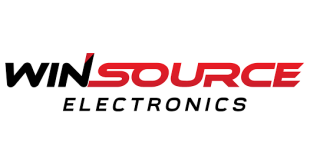Held back by poor economic conditions, global semiconductor market revenue in the second quarter fell by 3 percent year-on-year, resulting in widespread revenue declines for chip suppliers, particularly those headquartered in Japan and Europe. Worldwide semiconductor sales decreased to $75.2 billion in the second quarter of 2012, down from $77.5 billion during the same period in 2011, according to new market research analysis from IHS iSuppli.
In a troubling sign for the health of the semiconductor market in 2012, second-quarter revenue increased by less than 3 percent compared to the typically weak first quarter. If the semiconductor industry were on a trajectory for stronger growth in 2012 compared to 2011, second-quarter sequential growth would be expected to amount to at least 4 percent or more.
“Amid rising economic concerns, including the Eurozone crisis, slowing manufacturing growth in China and stubbornly highly unemployment in the United States, second-quarter growth for the global semiconductor industry was highly disappointing,” said Dale Ford, senior director of electronics and semiconductor research at IHS. “Approximately two-thirds of the world’s semiconductor suppliers saw their revenues decline in the second quarter compared to the same period in 2011. This weak performance bodes ill for the semiconductor industry’s growth prospects for the entire year.”
Global semiconductor revenue expanded by a marginal 1.4 percent in 2011. The new IHS forecast calls for an even weaker market in 2012. However, given weakness in the first half of the year, that forecast is likely to be downgraded even further.
The revenue decline was felt by companies in all regions. Companies based in all four major global regions saw their collective semiconductor revenues fall in the second quarter of 2012 compared to the same period in 2011.
The drop in revenues among leading suppliers exacerbated the situation. Among the world’s Top 10 semiconductor suppliers, six companies saw their revenues decline compared to the second quarter of 2011. Four of those companies suffered double-digit revenue declines.
European-based firms took the brunt of the downturn, as the economic crisis in the region took its toll on chip sales.
Among all semiconductor suppliers in Europe, combined revenue in the second quarter fell by 8.3 percent compared to a year earlier, the worst performance among all global regions. Two-thirds of all European suppliers saw their revenues fall during the period.
Top European semiconductor suppliers STMicroelectronics and Infineon Technologies saw double-digit year-over-year revenue declines of 16.4 percent and 12.9 percent, respectively.
Collective revenue for Japanese semiconductor suppliers retreated by 7.5 percent in the second quarter compared to the first quarter.
Half of the Japanese chip suppliers experienced decreases in revenue. However, deep drops in revenue by leaders such as Toshiba, Renesas Electronics, Fujitsu Semiconductor and Mitsubishi magnified the overall decline.
“This has become a standard pattern for revenue growth for Japanese chip suppliers, as they typically see strong growth during their fiscal year ending March each year—followed by a decline during their first fiscal quarter ending in June,” Ford said. “The expectation is that Japanese suppliers will see a rebound in their revenues in the quarter ending in September.
Among the world’s Top 10 semiconductor suppliers, Qualcomm stood out with its 23.7 percent growth, which boosted it to No. 4 in overall rankings, up from seventh place one year earlier. Broadcom also achieved double-digit growth at 10.0 percent. This pushed the company up one position in the rankings to ninth place.
No. 2-ranked Samsung’s revenues grew by 5.8 percent, boosted primarily by its acquisition of Samsung Electro-Mechanics.
 CIE Components in Electronics
CIE Components in Electronics



